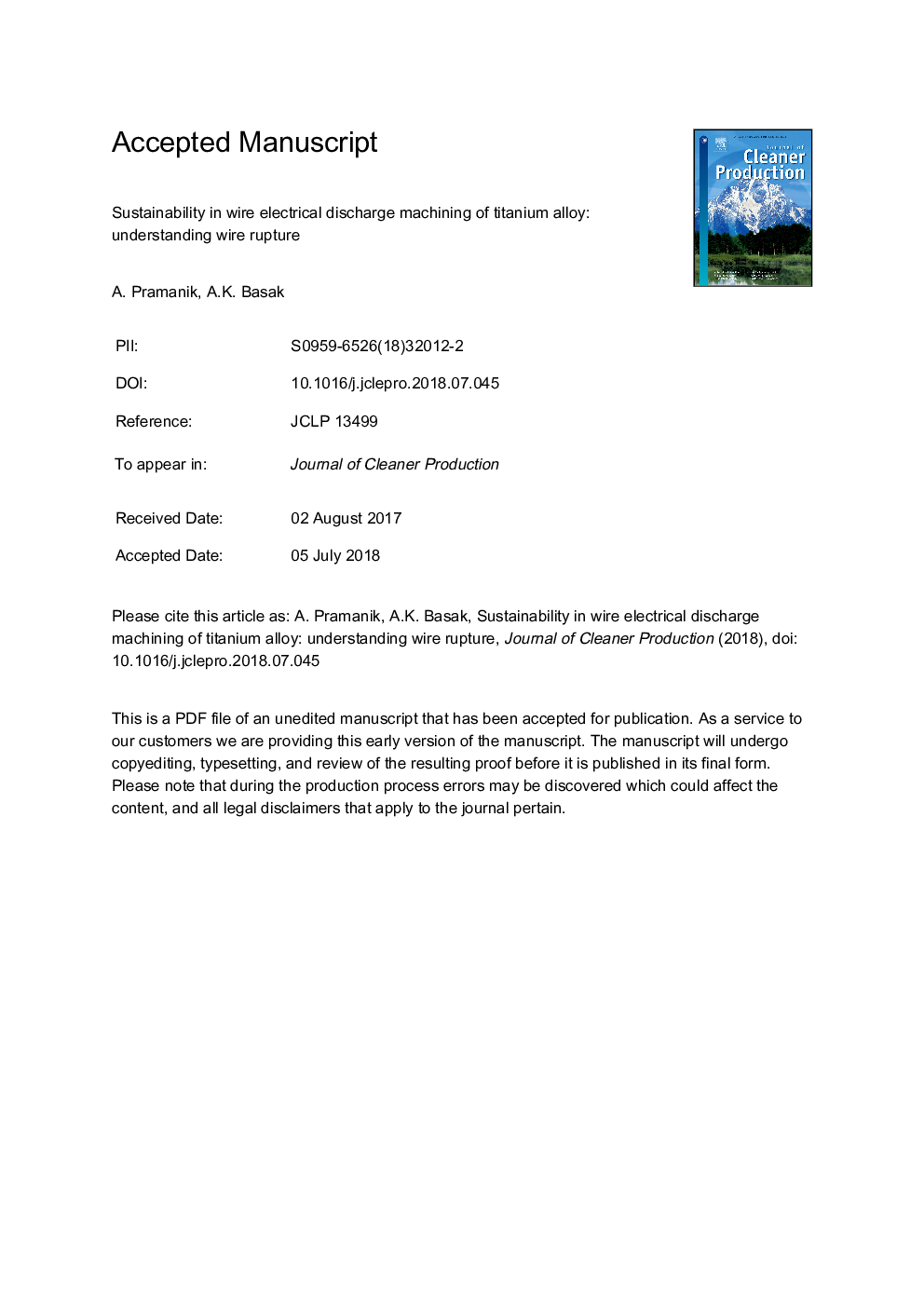| کد مقاله | کد نشریه | سال انتشار | مقاله انگلیسی | نسخه تمام متن |
|---|---|---|---|---|
| 8093494 | 1522054 | 2018 | 17 صفحه PDF | دانلود رایگان |
عنوان انگلیسی مقاله ISI
Sustainability in wire electrical discharge machining of titanium alloy: Understanding wire rupture
ترجمه فارسی عنوان
پایداری در سیم برق الکتریکی سیم پیچ آلیاژ تیتانیوم: درک شکست سیم
دانلود مقاله + سفارش ترجمه
دانلود مقاله ISI انگلیسی
رایگان برای ایرانیان
کلمات کلیدی
موضوعات مرتبط
مهندسی و علوم پایه
مهندسی انرژی
انرژی های تجدید پذیر، توسعه پایدار و محیط زیست
چکیده انگلیسی
To reduce the machining time and energy, it is important to have uninterrupted machining to make the process sustainable. Understanding the factors and mechanism that affect the wire failure is vital to reduce machining time to preserve resources and improve sustainability. Therefore, the mechanism of wire electrode rupture during electrical discharge machining (EDM) of Ti-6Al-4V alloy has been investigated in this study. To aid the analysis, electrolyte flushing pressure (7, 10, 15, 18â¯MPa), wire tension (800, 1100, 1400 and 1700 gf) and pulse-on-time (4, 6, 8 and 10 μsec) were varied to understand the effects of these parameters on wire rupture. The incidents of wire rupture are high at lower flushing pressure and higher wire tension. The influence of pulse-on-time depends on the interaction ns between wire tension and flushing pressure. The wire rupture occurs at instantaneous high temperature due to generation of unwanted arcs when the EDM debris/wastes are not flushed away properly. Higher wire tension may break the wire even at lower temperature in the machining zone. The wire rupture might be very sudden and/or gradual decrease of cross-section of the wire, however, the tips of the broken wire experience necking before fracture which is contributed to associated wire tension and softening by high temperature. The coating of the wire was disrupted and wear-off around the tips of broken wire. Workpiece material was not detected on the tips, however, trace of oxides islands was detected that formed due to high temperature oxidation of wire materials around the broken tips.
ناشر
Database: Elsevier - ScienceDirect (ساینس دایرکت)
Journal: Journal of Cleaner Production - Volume 198, 10 October 2018, Pages 472-479
Journal: Journal of Cleaner Production - Volume 198, 10 October 2018, Pages 472-479
نویسندگان
A. Pramanik, A.K. Basak,
